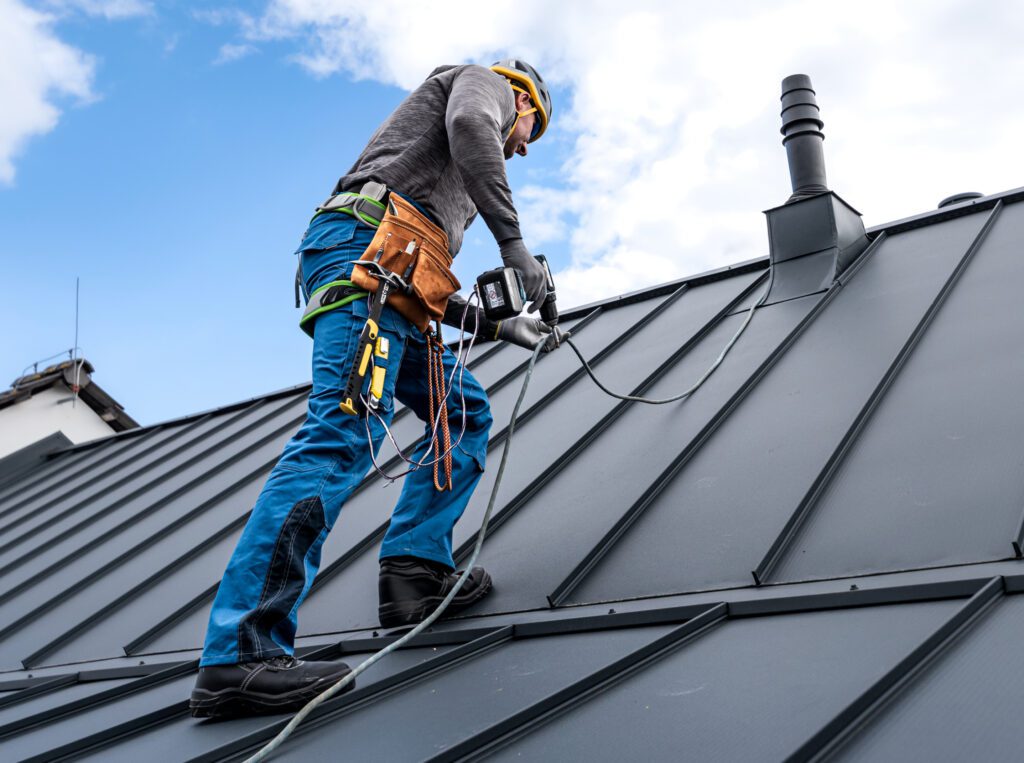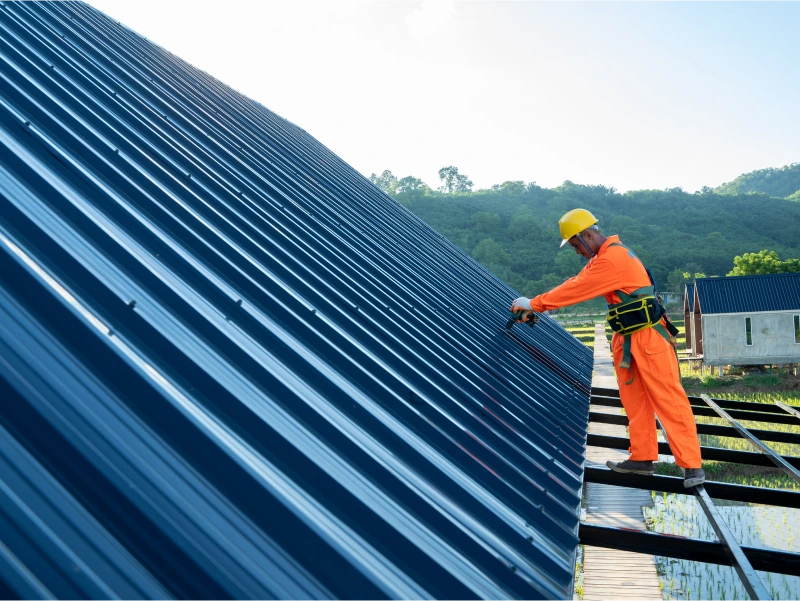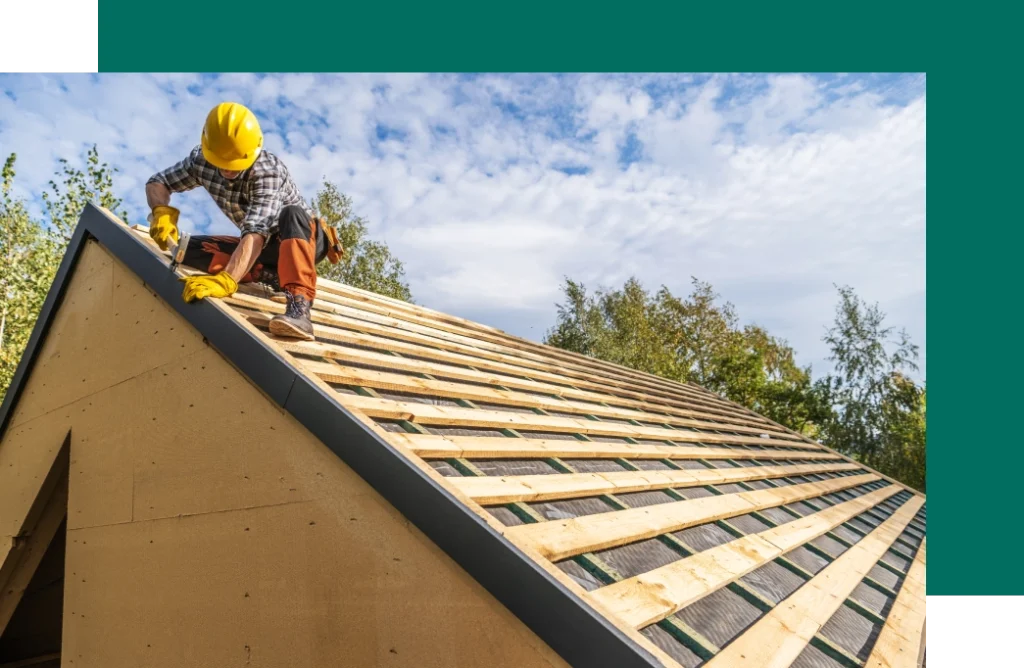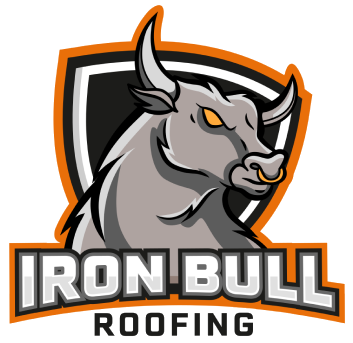How Much Does a New Roof Cost
From Pennies to Premiums: How Much Does a New Roof Cost?
When it comes to major home renovations, few projects prompt as many questions as a roof replacement. For most homeowners, the first and most pressing concern is the cost. A new roof is a significant investment, and understanding the financial commitment is crucial before any work begins. This initial focus on price is practical, as the final figure can impact household budgets for years to come.
However, the final new roof cost is not a simple, one-size-fits-all number. It is a complex calculation influenced by a variety of factors. The materials you choose, the architectural design of your home, and the labor required to complete the job all play a significant role in determining the bottom line. From budget-friendly asphalt shingles to premium slate tiles, every choice has financial implications.
This guide is designed to provide a clear and comprehensive breakdown of what goes into the price of a new roof. We will explore the key components that influence cost, from materials and labor to hidden fees and long-term value.
The Building Blocks of Roof Costs
Materials Matter Most
The type of material you select is the most significant factor in your roof’s total cost. Options range widely, from economical asphalt shingles that offer solid performance at a lower price point to high-end materials like slate or clay tiles that provide exceptional longevity and a distinct aesthetic.
Size and Scope
The size and complexity of your roof directly impact both material and labor costs. A larger home naturally requires more materials, increasing the total expense. Furthermore, the roof’s pitch, or steepness, affects the project’s scope. Steeper roofs are more challenging and time-consuming for installers to work on, which increases labor hours and safety requirements, ultimately adding to the final cost.
Local Factors
Where you live also plays a part in the cost of your new roof. Regional climates can dictate which materials are most suitable; for example, coastal areas may require materials resistant to salt and high winds. Additionally, local building codes and permitting requirements vary by municipality and can add to the overall expense, ensuring your new roof meets all necessary safety and construction standards.

New Roof Installation Cost
Labor: The Silent Multiplier
Skilled Craftsmanship
Hiring certified and experienced roof installers may come with a higher upfront cost, but it is an investment in the long-term integrity of your roof. Professional roofers have the expertise to install materials correctly, preventing leaks, and ensuring the roof system functions as intended.
Time Equals Money
The amount of time required to complete a roofing project is a direct driver of labor costs. A complex roof design with multiple angles, valleys, and dormers demands more precision and man-hours than a simple, straight-gabled roof. Similarly, if the existing roof must be completely torn off before the new one can be installed, this additional step will increase the project’s duration and, consequently, its total price.
Safety Premium
Working at significant heights is inherently risky, and professional roofing companies invest heavily in safety. The cost of labor includes essential safety equipment, comprehensive insurance coverage like liability and workers’ compensation, and adherence to strict safety protocols.
The Engineering and Inspection Layer
Structural Assessments
Before installing a new roof, especially with heavier materials like tile or slate, it is essential to conduct a structural assessment. This inspection ensures that your home’s existing framework can safely support the weight of the new roofing system. If the assessment reveals that reinforcements are needed, this will add to the overall project cost but is critical for maintaining your home’s structural integrity.
Permits and Paperwork
Most municipalities require building permits for significant construction projects like a roof replacement. The process of obtaining these permits involves fees and paperwork that contribute to the total cost. While it may seem like an added hassle, securing the proper permits ensures that your project is documented and complies with local regulations, protecting you from potential fines or legal issues.
Code Compliance
Building codes are in place to ensure safety and quality in construction, and they are regularly updated. A professional roofing contractor will be knowledgeable about current local codes and ensure your new roof is fully compliant. Adhering to these standards from the outset prevents the need for costly adjustments or repairs in the future and guarantees your roof is built to last.
Material Choices: Pennies, Premiums, and Everything Between
Asphalt Shingles
Asphalt shingles are the most popular roofing material in the United States, largely due to their affordability and proven reliability. They offer a good balance of cost-effectiveness and durability, typically lasting 20-30 years. Available in a wide variety of colors and styles, asphalt shingles provide a versatile and practical solution for homeowners working with a moderate budget.
Metal Roofing
Once primarily used for commercial buildings, metal roofing has become a popular choice for residential homes due to its sleek appearance, durability, and energy efficiency. While the upfront cost is higher than asphalt shingles, metal roofs can last 50 years or more and often lower energy bills by reflecting solar heat.
Luxury Options
For those seeking superior longevity and a high-end aesthetic, luxury materials like clay, concrete tile, or natural slate are excellent choices. These options offer unparalleled durability, with lifespans that can exceed 100 years, and provide a timeless, elegant look.
Hidden (But Important) Cost Additions
Tear-Off and Disposal
When you replace a roof, the old one has to go somewhere. The process of removing the existing roofing materials, known as a tear-off, and properly disposing of the debris is a necessary part of the job that adds to the total cost.
Underlayment and Decking Repairs
Beneath your shingles lies the roof deck, which is the wooden foundation of your roofing system. During the tear-off, the contractor may discover that the decking or the underlayment has been damaged by moisture or rot. Repairing or replacing these unseen components is essential for the longevity of your new roof and can be an unexpected but necessary addition to the project budget.
Flashing, Gutters, and Extras
A complete roofing system includes more than just shingles. Small but critical components like flashing—the metal pieces that seal joints around chimneys, vents, and valleys—are vital for preventing leaks. Additionally, you may decide to replace gutters, add skylights, or improve ventilation at the same time.

New Roof Installation Service Cost
Long-Term Value vs. Upfront Price
Durability vs. Replacement Cycle
When evaluating roofing options, it’s important to look beyond the initial price tag and consider the material’s lifespan. A less expensive roof might need to be replaced every 20 years, while a more expensive option could last for 50 years or more. Paying a higher upfront cost for a more durable material can result in significant long-term savings by extending the time between costly replacements.
Energy Efficiency Savings
A new roof can be an opportunity to improve your home’s energy efficiency. Certain materials, such as light-colored metal or specially coated shingles, reflect more sunlight and reduce heat absorption. This can lead to lower air conditioning costs in the summer. Proper ventilation and insulation, installed as part of the roofing system, also help maintain stable indoor temperatures, contributing to year-round energy savings.
Resale Boost
A new roof is a major selling point for potential homebuyers. It not only enhances curb appeal but also provides peace of mind, as buyers know they won’t have to face a costly replacement anytime soon. This can significantly increase your property’s resale value, often allowing you to recoup a substantial portion of your initial investment when it comes time to sell.
Financing and Budgeting Options
Payment Plans
A new roof is a large expense, but many roofing companies offer financing options to make it more manageable. These payment plans allow you to break down the total cost into predictable monthly installments, so you don’t have to pay for the entire project upfront.
Insurance Assistance
In some cases, your homeowners’ insurance may cover a portion or all of the cost of a new roof, particularly if the damage is the result of a storm, hail, or other covered peril. An experienced roofing contractor can help you navigate the claims process, providing the necessary documentation and working with your insurance adjuster to ensure you receive the coverage you are entitled to.
Smart Budgeting Tips
When planning for a new roof, it’s wise to budget for the unexpected. Set aside a contingency fund of around 10-15% of the total estimated cost to cover any unforeseen issues, such as rotted decking or structural repairs. Planning ahead for these potential expenses helps ensure that your project can proceed without financial stress or delays.
Iron Bull Roofing: Bringing Clarity to Roof Costs
Consultation with Transparency
At Iron Bull Roofing, we believe in providing honest and transparent estimates. Our experts conduct a thorough assessment of your roofing needs and provide a detailed, itemized quote tailored to your home. We explain every line item, so you know exactly what you are paying for without any hidden fees or surprises.
Expertise Across Materials
Choosing the right material is a balance of cost, performance, and aesthetics. Our team has extensive experience with a wide range of roofing materials, from classic asphalt shingles to modern metal systems. We provide expert guidance to help you select the best option that fits your budget and protects your home for years to come.
Complete Roofing Systems
A durable roof is more than just the top layer. We address the entire roofing system, including insulation, ventilation, and decking, to ensure optimal performance and longevity. By taking a comprehensive approach, we prevent future issues and provide you with a complete, reliable solution that stands the test of time.

Roof Installation Cost
A Confident Investment in Your Home
Ultimately, understanding roof costs is about seeing the project as an investment rather than just an expense. The price of a new roof reflects the quality of materials, the skill of the installers, and the long-term protection it provides for your home.
The key is to find the right balance between your budget and the value you receive. By weighing the upfront costs against long-term benefits like durability, energy efficiency, and increased property value, you can make a choice that aligns with your financial goals.
With the right information and a trusted partner, you can navigate the process of replacing your roof with confidence. Expert advice from a reliable company like Iron Bull Roofing empowers you to plan effectively, make informed decisions, and protect your most valuable asset.
https://www.google.com/maps?cid=1166087704919324729
